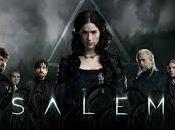GALLERIA KLATOVY / KLENOVÁ – Castello di Klenová (link:http://www.gkk.cz/cz/) – Uta Peyrer e Karl Prantl, KINDRED BY CHOICE idea e concetto della mostra Miroslava Hájek. (www.miroslavahajek.org/) Testo dal catalogo Miroslava Hájek > La mostra si è svolta dal 3 aprile al 29 maggio 2011. Il nome della mostra è preso in prestito dal titolo del romanzo Die Wahlverwandtschaften (Le affinità elettive), di Johann Wolfgang von Goethe. Il concetto di affinità elettiva è basato sulla nozione di affinità chimica che sarebbe quella proprietà che permette a diversi composti chimici di creare unioni in certe condizioni. Goethe usava il termine affinità come metafora organizzativa per il matrimonio e il conflitto tra la responsabilità e la passione. La mostra mette in luce un fenomeno che appare nel corso del ventesimo secolo, la vita comune e gli sforzi di coppie di artisti, grazie al quale hanno potuto entrare nel panorama artistico personalità femminili, che nel passato ne erano escluse. Una di queste è composta dagli importanti artisti austriaci Uta Peyrer e Karl Prantl. > La conoscenza della loro opera è entrata a far parte del subconscio culturale europeo già dagli anni sessanta del secolo scorso. In particolare l’opera di Karl Prantl, recentemente scomparso, ha influenzato positivamente molti scultori, sia a causa della natura del suo lavoro, ma anche a causa delle sue iniziative pionieristiche, innanzitutto come fondatore di simposi di scultura internazionali, ai quali invitava diversi artisti europei che lavoravano con il classico materiale della tradizione scultorea, la pietra. Allo stesso modo l’opera di Uta Peyrer, che nella sua pittura si concentra intensamente sui rapporti tra individuo e cosmo, è vicina a quegli autori che, in quel periodo, esploravano una problematica simile. In questa occasione, possiamo confrontare il processo di formazione e lo sviluppo di entrambi gli artisti e riconoscere le reciproche influenze che si sono create naturalmente nel corso della loro vita comune.

L’esposizione indaga sul comune indirizzo creativo attuato nonostante mezzi di espressione così diversi tra loro, come pittura e scultura in pietra. Essa chiarisce alcune tematiche, che si sono sviluppate in modo parallelo e completamente indipendente in entrambi i casi, per raggiungere risultati straordinari. La selezione delle opere tenta di evidenziare l’importante legame che unisce il lavoro dei due autori. Si tratta soprattutto della ricerca ed espressione di una nuova spiritualità che superi i limiti della coscienza e dei sensi. Nonostante l’evidente armonia estetica il lavoro di entrambi gli autori mostra una personalità forte e autonoma. Karl Prantl rivela l’infinita anima della materia mentre Uta Peyrer quella dell’infinito spazio. Le pietre di Karl, anche se sembrano vivere una loro vita propria, sono immerse in profondo silenzio, mentre i colori vorticosi dei quadri di Uta evocano un’immaginaria atmosfera musicale, che viene proiettata tramite la luminosità in uno spazio in continua espansione. Da questo particolare accostamento, come dell’opera che della personalità di questi due artisti si possono trarre conseguenze interessanti che ci aiuteranno a capire meglio i loro specifici sforzi creativi.
Miroslava HájekDi seguito il testo inglese e a questo link: Kindred by choice – Prantl Peyrer il PDF dell’intero catalogo (26 MB circa)
UTA PEYRER KARL PRANTL “KINDRED BY CHOICE” Miroslava Hájek The publication documents the exhibition by Uta Peyrer and Karl Prantl that was installed at Klenová Castle from 3 April to 29 May 2011. The
exhibition’s name was borrowed from Johann Wolfgang von Goethe’s novel
Die Wahlverwandtschaften, which
used the concept of affinity (the novel’s title can also be translated as
“elective affinities”), as an organizational metaphor for marriage and for the conflict between responsibility and passion. This concept of elective affinities is based on the older concept of chemical affinity, which can be defined as the characteristic that enables chemical substances, under certain circumstances, to form compounds. Applied to the visual arts, we arrive at three factors: two independent factors and a third one resulting from the final outcome of the mutual interaction of the first two. In our case, the concept of affinity forms the starting point for an exploration of a phenomenon that appeared over the course of the twentieth century – the artistic work and shared life of artistic couples. These unions have enriched our culture in general and brought a new and mutual sensitivity that in many cases enabled women to participate in an art scene from which they had previously been excluded. Renowned Austrian artists Uta Peyrer and Karl Prantl are one such couple. Their work first became known to the interested Czech public in the 1960s. The art of the recently deceased Prantl in particular has had a positive influence on many sculptors – not just through the character of his work, but also thanks to his groundbreaking initiatives such as his founding of several sculptural symposia to which Czech and Slovak artists working with classic sculptural material (stone) were invited as well. Peyrer’s work – paintings with an intense
focus on the individual’s relationship to the cosmos – also exhibits an affinity to certain Czech artists who found themselves attracted to a similar artistic orientation in the 1960s. Our aim was to explore the basic shared concepts that formed these two artists’ aesthetic and philosophical approach, to compare their artistic processes and development, and to identify the mutual influences that were a natural result of their life together. In our confrontation of these two artists, we explore the creative expression of similar artistic orientations, realized in such different media as painting and stone sculpture. We identify the themes that, both independently and in parallel, developed on both sides in order to result in remarkable artistic outcomes.
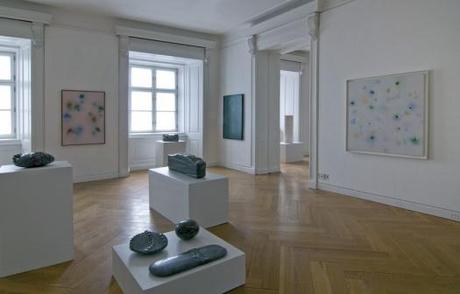
The exhibition was designed as a synthesizing walk through the artists’ lives. Its aim was to depict and emphasize the dialog that formed between their works during their long life together, all within a historical context that underscores the timeless nature of their work. The suggestive interior spaces of Klenová Castle offer a view into
seven rooms representing seven situations, seven symbolic moments during which the viewer may sense the artists’ aesthetic as well as human kinship. Each room underscores not only the affinity of their artistic expression and the way in which they translate universal questions into the language of art, but also presents the personal, private, and creative spaces that each artist developed independently. Despite their clear aesthetic harmony, both artists’ works show a strong and autonomous individuality. The selected works emphasize the important bond that connects the two artists’ work. First and foremost, this bond consists in their search for and expression of a new spirituality that extends beyond the limits of the human senses and human understanding. This unique confrontation of their works and personalities allows us to better understand their independent artistic efforts as well. At a time when the pace of life inexorably increased and grew more frantic, Prantl chose to express his aesthetic ideas and to realize his sculptures using stone – a material that requires lengthy and exhausting work by hand. Prantl’s works evoke a sense of eternal life unhindered by human concepts of space and time. Already by the
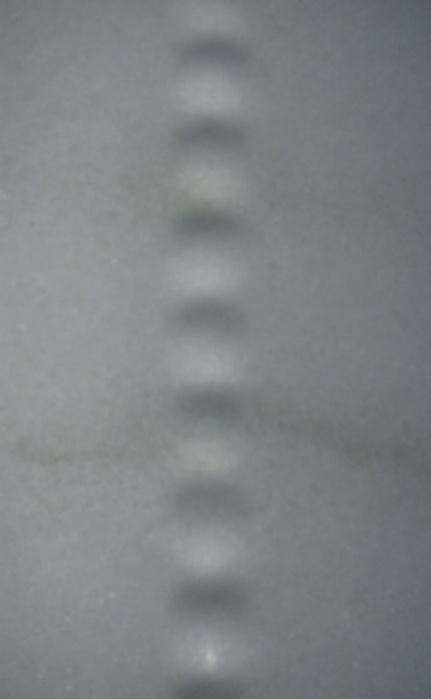
late 1950s, Prantl’s sculptures – most of which he had begun
calling Stones for Meditations (
Stein zur Meditation) – had crystallized into geometric structures, though these were never as precise as mechanically worked stones. The surfaces of his geometric bodies, treated with grooves and furrows, tremble with an inner tension. We frequently encounter the motif of one or several rounded pits worked into the stone. In some cases, these perforate all the way through the stone; especially in his large-scale sculptures, the mass of the stone reinterprets outer space within inner space. Prantl shows an ever-increasing interest in the inner life of matter. The outlines of his sculptures – cubes, spheres, or parallelograms – become irregular, with the stone’s veins following along a series of indentations. Later, the veins churn up the surface of the stone, and it is as if we can see and feel its pulse. Roughly until the beginning of the 1980s, Prantl works with mono – chrome material, primarily white marble and black granite. For his sculptures marked by stone veins, he likes to use serpentine. At the turn of the sixties and seventies, he creates a series of hermetic black granite monoliths of varying sizes. These perfectly smoothed objects, sometimes with only a minimum of surface working, create a strong emotional experience, as if they had accumulated the energy of the universe. In order to properly understand Prantl’s creative process, we must understand his relationship to nature. Prantl feels himself to be a part of nature, its anonymous
tool. The act of sculpting stone merely reveals what was hidden inside. With time, he lays bare not only the stone’s veins, but also its
bones. Prantl succeeded in combining the painterly quality of spotted granite with a living structure that feels as if it were frozen, spellbound, in petrified ice. Equally impressive are his sculptures made using greenish-red Ussuriysk amazonite. In places, the uniform green, dotted mass is suffused with a red color as if it were soaked in blood. Prantl succeeds in mastering the stone’s dramatic character without exaggerating its natural pathos.
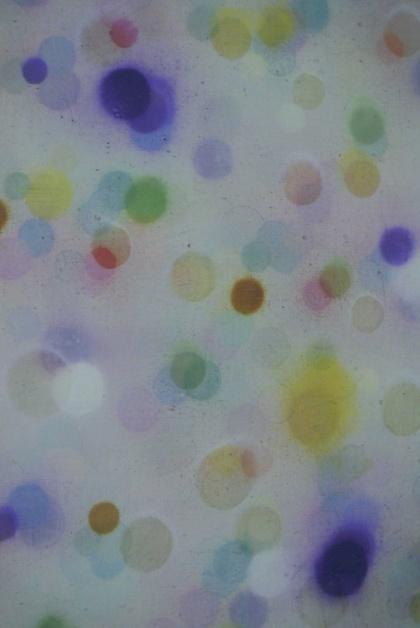
Although Karl’s stones seem to live their own life, they are immersed in a deep inner silence. By comparison, the swirling colors of Uta’s paintings bring to mind a musical atmosphere projected into infinity by light. Eventually, Peyrer’s different approach to the meaning of color meets up with Prantl’s search for and discovery of color in his stone sculptures. Uta uses layers of pigment to create vibrating round surfaces that give the illusion of a lucid, eternally expanding space. For Prantl, color is a tool for expressing and depicting the eternal inner space that he sought within the microcosm of his stone material – primarily granite and, during the last phase of his life, Norwegian Labrador – which he succeeded in working in such a manner as to emphasize the optic qualities of its shimmering interior. Both artists express the ideal of a new and abstract spirituality using spherical shapes. In Uta’s paintings, a cluster of spheres forms a colorful
nebula that reminds us of the depths of the cosmos, while Karl’s sculptures contain chains of spheres reminiscent of living veins – sometimes only hinted at – spreading out beneath the stone’s “skin.” Prantl presents us with his view of life within the broadest meaning of the word, connected by organic and inorganic elements. One particular theme shared by the work of both Peyrer and Prantl is their extraordinary relationship to time, which they understand as continuous, without beginning and end, where the most important thing is to reveal the essence of being. Nevertheless, the dominant theme in Uta’s paintings is the depiction of space through the use of colors; time is present in a more conceptual sense. In his text for the exhibition catalog to Peyrer’s exhibition “
Expanding Space and Stretching Time,” professor Herbert Muck offered a fitting description of the concepts of space and time in her work.
“She constantly returns to paintings she has begun. Large fields, composed of point centres, are extremely sensitive to even the smallest disturbances. Changes mean, that everything must be integrated again on the basis of a single impulse. With fine, transparent brushstrokes, another thin layer of paint is applied, and a new nuance changes the painting. ose intermediary results can be modulated further. It could be said that the painter risks taking new steps in order to keep the whole in motion, to renew the tension. She says: “I risk freedom”. Oen a painting will remain unchanged for several months, and she will spend hours in front of it before she decides to take the next step. Into these paintings of cosmic creation and metamorphosis are woven the phases of life, periods of existence in which Uta herself undergoes the processes of creation and extinction, which allow a work to come into existence and change”.1 Peyrer’s exploration of chromatic effects places her work alongside that of other international artists who focused on this issue, primarily in the 1960s and ‘70s. This period was marked by a prevailingly rational or even scientific approach (op-art), with many artists searching for controllable possibilities for the use of color balance, experimenting with optical effects, and trying to create the illusion of perspective by merely approximating various colors, thus revealing so-called retinal colors, which are formed directly in the eye without existing in real life. Uta applies this knowledge instinctively, and succeeds in overcoming the limits of rational understanding, which in a certain sense limit painting.
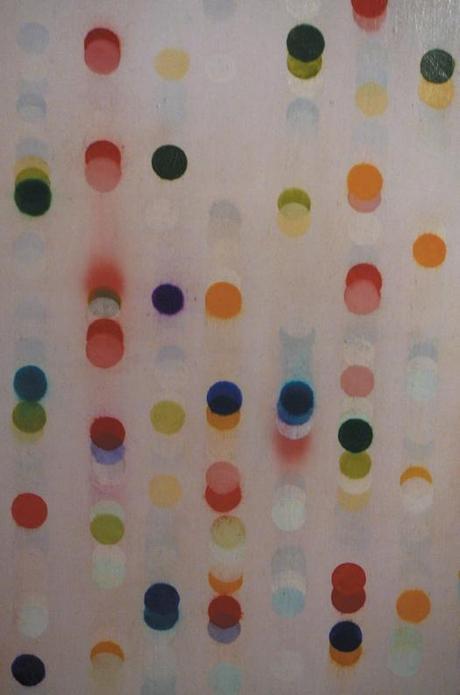
The spaces in Uta’s paintings contain the strength of cosmic magnetism, and even appear capable of giving us an impression of its sound. Uta Peyrer’s paintings are music translated into color. They remind us of colorful musical scores. Her work follows in the footsteps of the Orphic paintings of the early abstractionists such as František Kupka or Sonia and Robert Delaunay. Nevertheless, we can find a greater connection, perhaps unconscious, with the paintings of Romolo Romani (1884-1916), which depict drops falling onto a watery surface and in which we may hear rhythmic sounds. The musicality of Uta’s paintings is rhythmic as well; we can almost hear it, especially in the room dedicated to Steve Reich. The multifaceted realities of the universes explored and discovered in the art of these two artists are different, but closely related. Karl Prantl reveals the spirituality of infinite matter, while Uta Peyrer reveals the spirituality of infinite space. I am convinced that the exhibited works give a clear insight into how they supplement one another and how many new ideas were born during the artists’ life together. As a result, we understand how important it is, if we want to understand various artistic languages, to be aware of the web of contexts and interrelations, to understand its logic, and to classify it within the general history of art. Miroslava Hájek









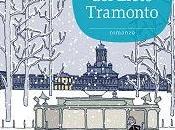
![[Focus On]: OCULUS.IL RIFLESSO MALE (Movie)](https://m21.paperblog.com/i/289/2894186/focus-on-oculusil-riflesso-del-male-movie-L-zfe1eo-175x130.jpeg)
